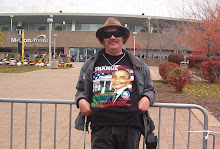Last week, I suggested the manner in which the traditional four elements and various forms of artistic creation fulfilled certain symbolic functions in the structure of my novel Sweetheart of the Lonesome Boulevard. In this post, I shall discuss what several characters refer to as ‘the Web,’ the first of three central symbols which I employ in communicating the thematic content of this book.
The basic notion of the Web is based on the ‘six degrees’ or ‘small world’ hypothesis developed by Karinthy, Gurevitch, and Milgram (I have not, I confess, seen Guare’s play). In short, each human being influences the lives of every other, if not directly, then indirectly but in relative proximity. In spite of Dorf’s—and other’s—sense of existential lonesomeness, no one is truly isolated. Each character who is anything more than a mere narrative functionary is therefore a nexus of the relationships and events that constitute the fabric of the novel; each lives upon an intersection of strands that stretch from one end of Sweetheart’s world to another. As the metafictional presence David Author—temporarily disguised as a missing persons detective—explains, no one can ever be truly ‘lost’ (and spiritual connotations are not irrelevant here) because they can always be ‘found’ by means of a careful following of these strands.
Take, for example, Frank Lovaleer, Jr, lead singer of the Lovaleer Brothers’ Gospel Quartet, a character whom Dorf never meets, of whom he is hardly aware until Part 4. Frank’s father was an FBI agent who terrorized Shorty’s father to the point of suicide. Shorty is Dorf’s employer and mentor, and hardly has the novel begun when Jimmy, an odd young customer, comes into Shorty’s Records to request a Lovaleer Brothers’ album. Jimmy, an escaped mental patient, is at this time apparently unaware that Frank Lovaleer is his own brother-in-law, married to his twin sister Joan. Jimmy and Joan are the younger siblings of Peter Aram, a dead poet who had been the lover of Elaine Rinders, Dorf’s English teacher. Furthermore, Frank, a connoisseur of virgins, seduces Dorf’s classmate Iris Hankey following a concert at Dorf’s college; Iris disappears from campus to pursue her seducer, and speculation on her whereabouts is the main topic of discussion between Dorf and his girlfriend Myra as they drive to Myra’s house where her father, a psychiatrist, tells Dorf the case history of Jimmy under a clinically altered name.
If time and space and discretion permitted, I could expand this complex here, as I do in the novel, to include the wounded painter Dennis Parker, the motor-mouthed radio preacher Cosmo Hayes, Dorf’s lover Marguerite, and his anti-Semitic grandfather, and on and on and on… Yet no one of these characters, least of all Dorf, has any notion of the complexity of this web. It is shown to the reader in hints and intimations through the combination of Dorf’s story with those of the secondary narrators (see http://www.davidvanlifeandfiction.blogspot.com/2009/08/why-this-book-part-2.html). There is existential irony here, an irony which could be communicated neither through a single, limited narrator nor by an omniscient narrative voice. The reader is drawn firsthand into Dorf’s isolation and alienation, his lonesomeness (and that of the other narrators), while yet having access to the transcendent view of his connectedness with all humanity.
Though the lonesomeness is transcended by the Web of interrelationship, it is nonetheless a spiritual reality in itself. In my next post, I shall examine the Boulevard, the symbol that most clearly embodies this lonesomeness.
Should these posts interest you in Sweetheart of the Lonesome Boulevard, please feel free to comment below.
Peace,
David P. Van
Saturday, September 5, 2009
Subscribe to:
Post Comments (Atom)


No comments:
Post a Comment